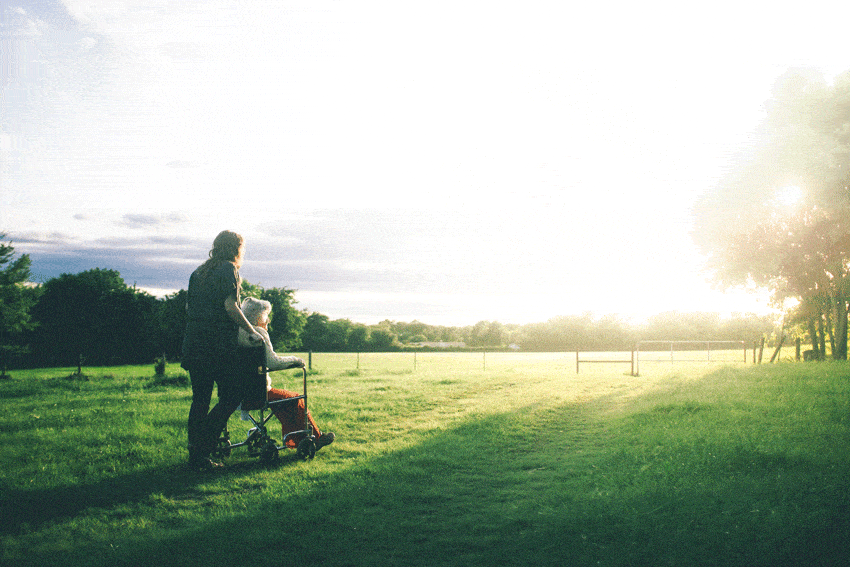
Healthcare for serious illness in regional NSW is underfunded in negligent fashion
Imagine having stage four t-cell lymphoma, a rare form of blood cancer, and having it go undiagnosed for five years.
Imagine that instead of realising you were a cancer patient at risk of dying without appropriate treatment, the only GP in town mistook it for psoriasis (a skin condition that causes itchy, flaky skin) and sent you to a dermatologist instead.
This is what happened to Katrina Richards, a young mum living in Narrabri, about 500km northwest of Sydney.
Katrina is not alone. According to the Leukaemia Foundation, 1375 Australians die unnecessarily each year from blood cancers like leukaemia and lymphoma because they live where accurate diagnoses or treatment are unavailable, for lack of resources.
Palliative care in the regions is also wholly inadequate. [Some] places have just one palliative care doctor looking after a population of more than 100,000. – Monica Doumit
To put this number in context, more Australians died from preventable blood cancer deaths over the past two years than died from COVID-19. They didn’t have to die; it’s just that the necessary healthcare was not available where they live.
It’s not only blood cancers.
The NSW Health Portfolio Committee is currently running an inquiry into health outcomes and access to health and hospital services in rural, regional and remote NSW. The inquiry will continue until December and report back next year.
So far, the Committee has heard evidence that those living in regional and rural communities in NSW have a lower life expectancy than those in urban areas, with the greatest gap in life expectancy experienced by Indigenous communities. Later diagnosis (as Katrina experienced), limited treatment options and long waiting periods for specialist care are among the causes.
The Committee also heard that regional centres do not provide a “complete cancer service.” Patients must choose between travelling to specialists in metropolitan centres, away from family and other support networks, or staying close to home where they are less likely to survive their illness as their city-based counterparts.
Sometimes they don’t even have that choice. The Committee heard from regional cancer patients who simply couldn’t afford to travel to the city to see specialists and had to settle for inferior, local treatment instead.
Even where regional hospitals could technically offer certain medical treatments, they sometimes lack staff to provide them. For example, a new hospital at Tumut (near Gundagai) does not have a resident anaesthetist, nor a resident GP surgeon. What this means in practice is that no emergency surgery is possible in this “new” hospital.
Earlier in the year, it was reported that Wellington Hospital in the Dubbo region was operating with one temporary doctor, working seven days a week. As the former mayor of Dubbo, Ben Shields, wrote at the time, the only thing worse than a pub with no beer is a hospital without a doctor.
Palliative care in the regions is also wholly inadequate. Orange – a relatively key regional centre – has only two palliative care beds. Other places have just one palliative care doctor looking after a population of more than 100,000.
The lack of palliative care in the regions is why NSW Shadow Minister for Police, Labor MP Walt Secord, recently confirmed that he would be voting “no” on Alex Greenwich’s push to legalise euthanasia and assisted suicide in NSW.
Secord is sitting on this Committee inquiry, and so has heard evidence from many people about the lack of access to proper care. He said that a society is judged on how it treats people in the last days of their lives. It is evident that Secord believes we should be ensuring that everyone, irrespective of their postcode, has equal access to quality care before countenancing the introduction of a euthanasia regime.
Secord’s position is completely reasonable, but it is not clear how many of his parliamentary colleagues agree, particularly if the experience in other states is anything to go by.
Prior to the legalisation of euthanasia and assisted suicide in Queensland, Premier Annastacia “our-hospitals-are -for-our-people” Palaszczuk said it was “absolutely not physically possible to put palliative care into every community in Queensland.” The Queensland Government will do its best, however, to make sure those communities that cannot access palliative care will be able to access euthanasia.
Similarly, the West Australian euthanasia and assisted suicide law contains a provision that says regional residents of WA are entitled to the same level of access to euthanasia and assisted suicide as those in metropolitan regions. An amendment was proposed to extend this same entitlement to palliative care, but it was defeated.
Euthanasia is so much cheaper for governments and health care systems than adequate care. And while that’s understandable, let’s not pretend that the debate over euthanasia and assisted suicide is about providing “choice”, because it’s anything but.
